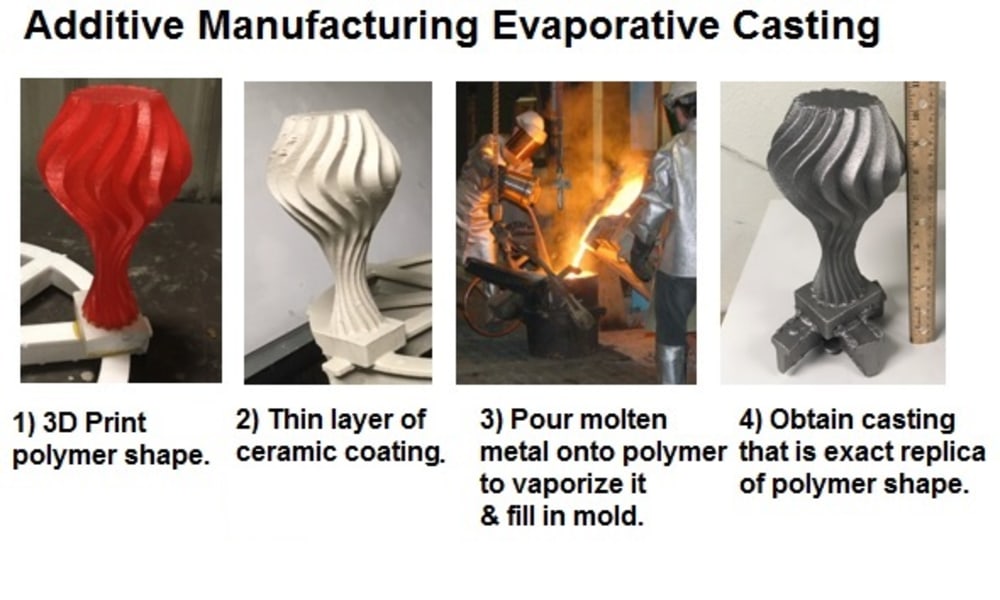
The metal additive manufacturing industry is advancing rapidly as a manufacturing process. It is over a $1B market and forecast to be nearly $10B within 8 years. There are massive benefits such as avoiding tooling costs, quicker turn around, and permitting designs of more complicated shapes. The market would likely be even greater except there are several major issues. Some of the biggest pain points are as follows:
1) Costly equipment and raw materials makes additive unaffordable for much of mass manufacturing.
2) The printing processes (micro-welding or sintering) can adversely impact material properties such as strength, fatigue, and corrosion resistance.
3) Porosity and voids can be difficult to predict or control and can cause failures.
4) There is somewhat limited alloy availability for metal powders compared to millions of alloy options in melting.
5) The time to print items is a function of volume making it difficult to scale for larger parts.
The solution to all of these problems is the additive manufacturing evaporative casting process (AMEC).
AMEC is based on lost foam casting, a process which already permits highly complicated shapes. Instead of foam which either uses tooling or has to be machined from stock foam board, the innovation is to use 3D printed polymers. In AMEC, one only needs to 3D print the surface of the shape desired using a cheap common polymer such as PLA.
The 3D shape is then glued to a runner system from standard lost foam casting, coated in a thin ceramic coating, and then packed in a container of loose sand. Molten metal of nearly any alloy hot enough to vaporize the polymer is poured directly onto the 3D printed polymer shape. The molten metal instantly vaporizes the 3D printed polymer, fills in the void with metal, solidifies, and leaves behind an exact replica. Experiments have been conducted which show the process works in aluminum, brass, low carbon steel, stainless steel, gray and ductile iron.
The price of PLA polymer is incredibly cheap and the other parts of the process are no different than standard lost foam casting making this method incredibly affordable. It is anticipated that once fully developed and commercialized, this process for steel parts would be done at $3/lb. which is about half the current cost of just buying 3D print powders. Although the time to 3D print the surface depends on the part size and geometry, once fully developed it is anticipated that a 100 lb. part could be produced in less than 24 hours assuming the STL file already exists.
Unlike printing wax patterns, the process does not require a thick coating that takes time to make, dry, and remove after casting; does not require a wax burn out step; and is not limited to sizes and shapes where the wax doesn’t distort under its own weight. Unlike 3D printing sand molds which have typical tolerances of 0.040”/inch, the process maintains investment casting tolerances of 0.003”/inch yet is faster and cheaper to print.
-
Awards
-
 2019 Top 100 Entries
2019 Top 100 Entries
Like this entry?
-
About the Entrant
- Name:Sarah Jordan
- Type of entry:teamTeam members:Mark DeBruin, Sarah Jordan
- Patent status:none

